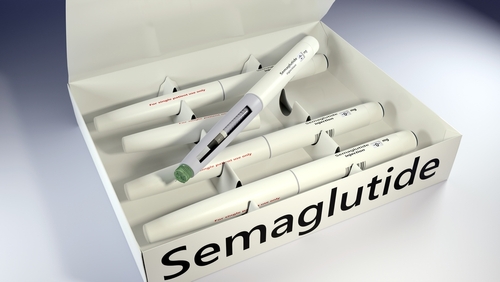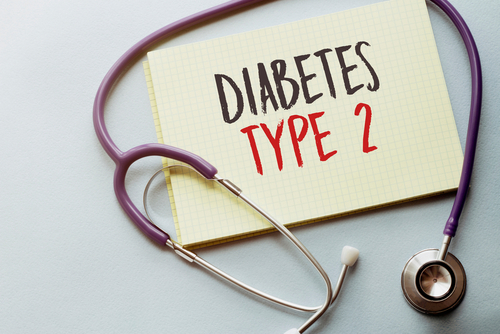
Type 2 diabetes, chronic kidney disease (CKD), and cardiovascular disease overlap in many ways. Therefore, prevention of cardiovascular and kidney disease events is a major focus of type 2 diabetes, CKD, and obesity management.
Glucagon-like peptide-1 (GLP-1) receptor agonists have emerged as an important new advancement in the management of cardiovascular-kidney-metabolic syndrome. Although research has demonstrated that GLP-1 receptor agonists significantly reduce major adverse cardiovascular events (MACE) and composite kidney outcomes in individuals with type 2 diabetes, questions remain.
Composite kidney outcomes in previous trials were assessed as secondary outcomes, and reported effects were mostly driven by a lower risk of new-onset macroalbuminuria. It is unclear whether GLP-1 receptor agonists reduce the risk of important clinical outcomes, including kidney failure and whether patients without diabetes could benefit from GLP-1 receptor agonist treatment for cardiovascular and kidney outcomes.
Researchers led by Sunil V. Badve, MBBS, MD, DNB, PhD, conducted a literature search and meta-analysis of aggregate data from randomized controlled trials to illuminate these issues. Their results were published in Lancet Diabetes & Endocrinology.
Eligible studies for inclusion were randomized controlled trials, had at least 500 participants with type 2 diabetes, compared a GLP-1 receptor agonist with placebo, included at least 12 months of follow-up, and reported a primary clinical kidney or cardiovascular outcome. Studies were identified using MEDLINE, Embase, and the Cochrane Central Register of Controlled Trials. In addition, authors of the FLOW trial provided their data.
The primary kidney disease outcome was a composite of kidney failure (kidney replacement therapy or a persistent estimated glomerular filtration rate [eGFR] <15 mL/min per 1.73 m2), a sustained reduction in eGFR from baseline by 50% or more, or death due to kidney disease.
When the eGFR reduction data were not available, researchers analyzed the nearest reported equivalent. When data on the composite kidney outcome were not available, they included kidney failure as the primary outcome.
The primary cardiovascular outcome was MACE (cardiovascular death, nonfatal myocardial infarction, or nonfatal stroke). Secondary outcomes comprised kidney failure, a 50% or more (or nearest equivalent) sustained reduction in eGFR, individual components of MACE, all-cause death, and hospitalization for heart failure.
Key adverse outcomes included medullary thyroid cancer, pancreatic cancer, acute pancreatitis, severe hypoglycemia, and retinopathy. Subgroup analyses were conducted for age, sex, body mass index, cardiovascular disease, eGFR, type of GLP-1 receptor agonist, frequency of administration, and median duration of follow-up.
The researchers used a random-effects approach on the assumption that the true effect could vary among studies. They also performed a leave-one-out meta-analyses for the primary composite kidney and MACE outcomes to examine the influence of each study on the overall effect size estimate. In addition, heterogeneity across studies was estimated with the I2 test. Subgroup analyses were performed to compare overall treatment estimates across participants with or without type 2 diabetes.
The researchers analyzed 11 trials from 21 full-text articles including 85,373 participants, of whom 29,386 were female and 55,987 were male. The median sample size was 6,068 participants (range, 3,183-17,604). Median follow-up duration was 25.2 months (range, 15.9-64.8). Participants’ key baseline characteristics were well-balanced between groups. The mean baseline eGFR was 77.2 mL/min per 1.73 m2.
The primary outcomes were a five-component kidney disease outcome including cardiovascular death (one trial), a three-component MACE outcome (eight trials), and a four-component MACE outcome including hospitalization for unstable angina (two trials).
Among participants with type 2 diabetes (n=67,769), GLP-1 receptor agonists reduced the composite kidney outcome by 18% compared to placebo (hazard ratio [HR], 0.82; 95% CI, 0.73-0.93; I2=26.41%) and reduced kidney failure by 16% (HR, 0.84; 95% CI, 0.72-0·99; I2=0%). In addition, GLP-1 receptor agonists reduced MACE by 13% (HR, 0.87; 95% CI, 0.81-0.93; I2=49·75%) and all-cause death by 12% (HR, 0.88; 95% CI, 0.83-0.93; I2=0%) compared to placebo.
The effect remained consistent for the composite kidney outcome (HR, 0.81; 95% CI, 0.72-0.92; I2=23·11%), kidney failure (HR, 0.84; 95% CI, 0.72-0.98; I2=0%), MACE (HR, 0.86; 95% CI, 0.80-0.92; I2=48·9%), and all-cause death (HR, 0.87; 95% CI, 0.82-0.91; I2=0%) when the SELECT trial, which enrolled participants with no history of diabetes, was included. There was no evidence of heterogeneity between this trial and those including participants with type 2 diabetes (Pheterogeneity>.05).
The risk of serious adverse events, including acute pancreatitis and severe hypoglycemia, did not differ between the GLP-1 receptor agonist and placebo groups (risk ratio [RR], 0.95; 95% CI, 0.90-1.01; I2=88·5%). However, treatment discontinuation due to adverse events occurred more often in the GLP-1 receptor agonist groups (RR, 1.51; 95% CI, 1.18-1.94; I2=96·3%).
The authors acknowledge some limitations of their study. Definitions of kidney disease outcomes were not consistent across trials. Event rates of kidney failure were low in all trials except FLOW, and the reduction in risk of the composite kidney disease outcome may have been due to the outcome of sustained reduction in eGFR by 50% or more (or the nearest equivalent).
Kidney disease was not the primary outcome in any of the included trials except FLOW. Subgroup analyses according to participant-level baseline characteristics were not conducted due to the unavailability of data. Subgroup analyses by diabetes status were also limited because the SELECT trial was the only trial that enrolled participants without diabetes. Lastly, all trials included were industry-funded.
In conclusion, the authors said, the study provides high-certainty evidence that GLP-1 receptor agonists significantly reduce the risk of clinically important cardiovascular and kidney outcomes.
“Taken together,” they wrote, “these results and the breadth of the benefits observed support an important role for GLP-1 receptor agonists as kidney-protective and heart-protective medications that could play an important role in addressing the global burden of noncommunicable diseases, particularly in people with type 2 diabetes, chronic kidney disease, or overweight and obesity.”
Source: Lancet Diabetes & Endocrinology







 © 2025 Mashup Media, LLC, a Formedics Property. All Rights Reserved.
© 2025 Mashup Media, LLC, a Formedics Property. All Rights Reserved.